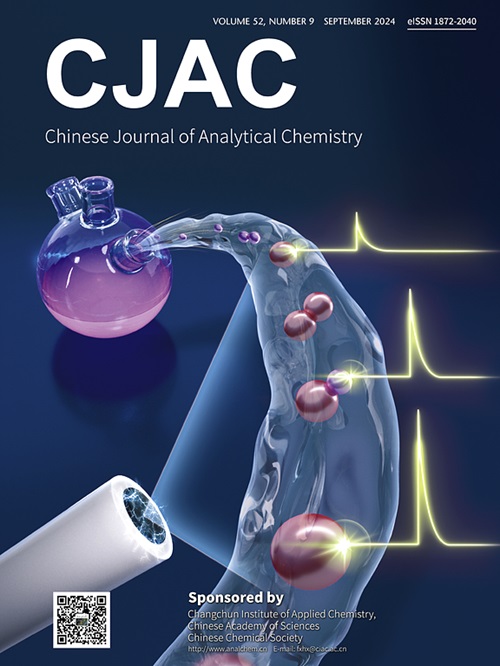Proteomic fingerprints of protein corona formation on MIL-88B(Fe)-NH2 metal-organic framework
IF 1.3
4区 化学
Q4 CHEMISTRY, ANALYTICAL
引用次数: 0
Abstract
When nanoparticles are introduced to living systems, they are quickly covered by a biomolecular coating referred to as the protein corona. This coating endows nanoparticles with new biorecognition properties, subsequently impacting their behavior and downstream toxic effects. Herein, the proteomic fingerprints of protein corona formation on Fe-based metal-organic framework (Fe-MOF) MIL-88B(Fe)-NH2 exposed to plasma of the marine flatfish turbot (Scophthalmus maximus) were investigated. The formation of fish plasma protein corona on haemocompatibility of Fe-MOF were investigated. Transmission electron microscopy and flow cytometry confirmed the formation of plasma protein coronas on the Fe-MOF particles. The immunoglobulins and complement proteins were enriched on the Fe-MOF surface, whereas the lipoproteins and coagulation proteins were significantly depleted compared with their original concentrations in the crude plasma. Hemolysis induced by Fe-MOF was influenced by fish plasma protein corona formation. This study offers insights into the interaction between a representative Fe-MOF and fish plasma proteins, enabling a better understanding of the biological behavior of Fe-MOFs in the blood system.

MIL-88B(Fe)-NH2金属-有机骨架上蛋白冠形成的蛋白质组学指纹图谱
当纳米颗粒被引入到生命系统中时,它们很快就会被一层称为蛋白质冠的生物分子涂层所覆盖。这种涂层赋予了纳米粒子新的生物识别特性,从而影响了它们的行为和下游毒性作用。本文研究了大比目鱼(Scophthalmus maximus)血浆中铁基金属有机骨架(Fe- mof) MIL-88B(Fe)-NH2蛋白冠形成的蛋白质组学指纹图谱。研究了鱼血浆蛋白冠的形成对Fe-MOF血液相容性的影响。透射电镜和流式细胞术证实在Fe-MOF颗粒上形成血浆蛋白冠状体。Fe-MOF表面的免疫球蛋白和补体蛋白富集,而脂蛋白和凝血蛋白则明显减少。Fe-MOF诱导的溶血受血浆蛋白冠形成的影响。本研究提供了具有代表性的Fe-MOF与鱼血浆蛋白之间相互作用的见解,从而更好地理解Fe-MOF在血液系统中的生物学行为。
本文章由计算机程序翻译,如有差异,请以英文原文为准。
求助全文
约1分钟内获得全文
求助全文
来源期刊
CiteScore
3.60
自引率
25.00%
发文量
17223
审稿时长
35 days
期刊介绍:
Chinese Journal of Analytical Chemistry(CJAC) is an academic journal of analytical chemistry established in 1972 and sponsored by the Chinese Chemical Society and Changchun Institute of Applied Chemistry, Chinese Academy of Sciences. Its objectives are to report the original scientific research achievements and review the recent development of analytical chemistry in all areas. The journal sets up 5 columns including Research Papers, Research Notes, Experimental Technique and Instrument, Review and Progress and Summary Accounts. The journal published monthly in Chinese language. A detailed abstract, keywords and the titles of figures and tables are provided in English, except column of Summary Accounts. Prof. Wang Erkang, an outstanding analytical chemist, academician of Chinese Academy of Sciences & Third World Academy of Sciences, holds the post of the Editor-in-chief.

 求助内容:
求助内容: 应助结果提醒方式:
应助结果提醒方式:


